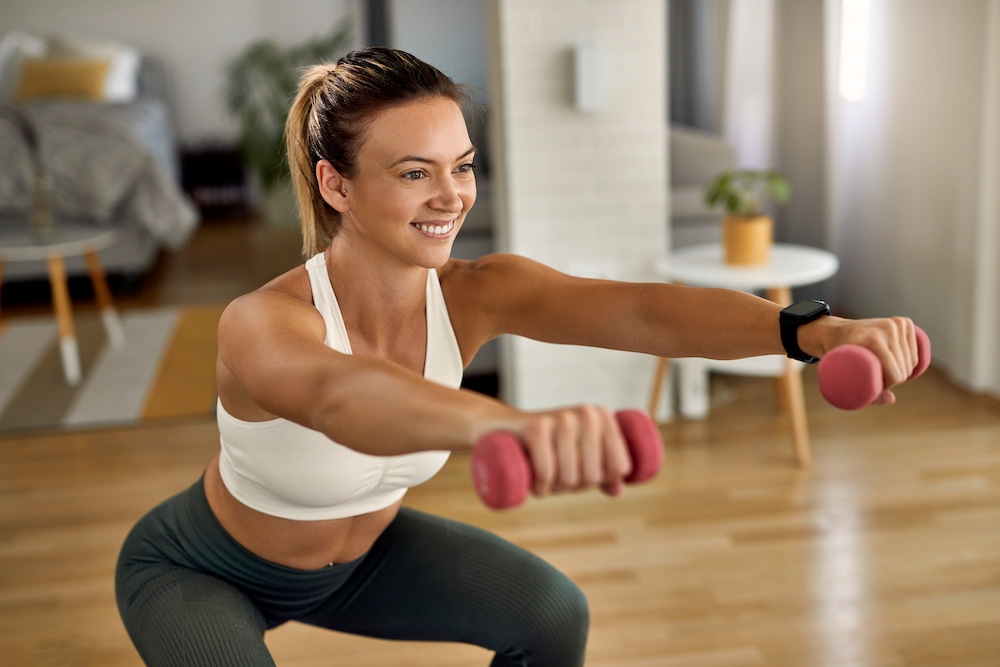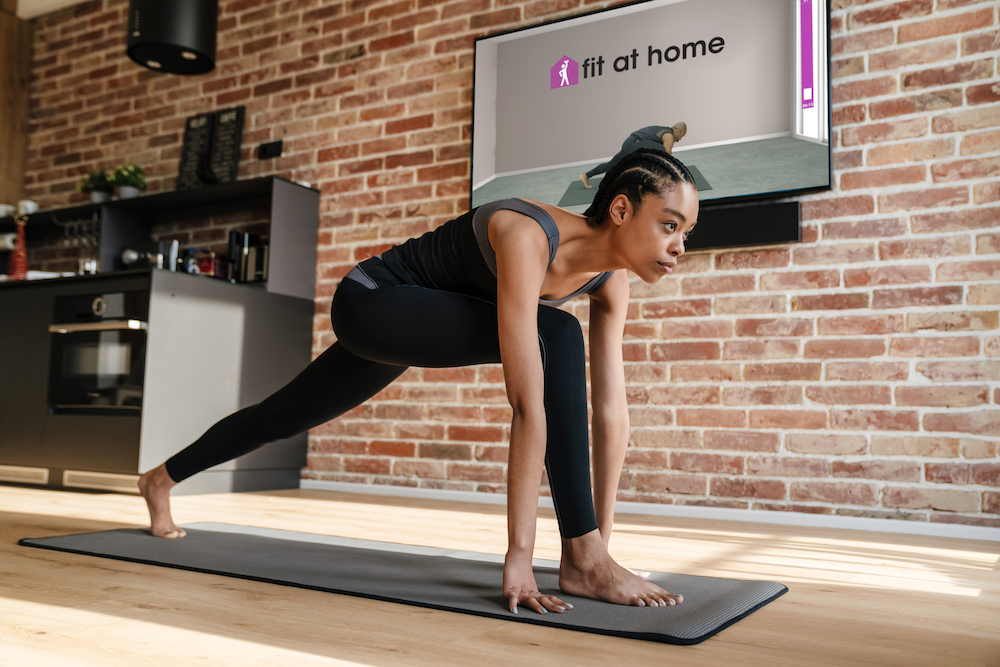In the realm of fitness, dumbbells are your trusty sidekicks for building strength, toning muscles, and achieving your fitness goals. Whether you’re a beginner or a seasoned lifter, working out with dumbbells can be a game-changer in your fitness routine. In this blog, we’ll dive into the world of dumbbell workouts, exploring their benefits, essential exercises, and tips to maximize your results.
Is working out with dumbbells effective?
Working out with dumbbells can be highly effective for achieving various fitness goals. Here are some reasons why dumbbell workouts are considered effective:

- Versatility: Dumbbells offer a wide range of exercise possibilities, allowing you to target almost every muscle group in your body. From compound movements like squats and deadlifts to isolation exercises like bicep curls and lateral raises, you can design a well-rounded workout routine with dumbbells.
- Balanced muscle development: Dumbbell exercises often engage stabilizer muscles, which are essential for functional strength and preventing muscle imbalances. Unlike some weight machines that isolate specific muscles, dumbbells promote a more comprehensive and balanced muscle development.
- Core engagement: Many dumbbell exercises require you to engage your core muscles for stability and support. This helps strengthen your core, improving posture and reducing the risk of back pain.
- Progressive overload: Effective strength training involves gradually increasing the resistance over time. Dumbbells are perfect for this because you can easily adjust the weight to suit your current fitness level. This principle of progressive overload is crucial for muscle growth and strength gains.
- Convenience: Dumbbells are compact and portable, making them a convenient choice for home workouts, gym sessions, or even outdoor exercise. You don’t need a lot of space or specialized equipment to get an effective workout with dumbbells.
- Functional strength: Dumbbell exercises often mimic real-life movements, making them excellent for improving functional strength. This means you’ll be better prepared for everyday activities and less prone to injuries.
- Time efficiency: Dumbbell workouts can be efficient, as you can target multiple muscle groups with compound exercises. This can be especially beneficial for those with busy schedules.
Working out with dumbbells can be highly effective for building strength, increasing muscle mass, improving overall fitness, and enhancing functional strength. However, the effectiveness depends on your commitment to proper technique, consistency, and an appropriately designed workout plan tailored to your fitness goals.

Dumbbell & Fit workouts
Our Dumbbell & Fit workouts aren’t just focussed on your arms, but your entire body! With these workouts you’ll get really sweaty and work on your strength.
Dumbbell workout at home
A dumbbell workout at home can be a convenient and effective way to improve your strength, tone your muscles, and stay fit. Whether you’re a beginner or an experienced lifter, here’s a sample dumbbell workout routine you can do in the comfort of your home. Make sure to warm up before starting and consult with a healthcare professional before beginning any new exercise program, especially if you have pre-existing medical conditions.
Warm-up: Perform 5-10 minutes of light cardio, such as jumping jacks, jogging in place, or bodyweight squats, to increase your heart rate and warm up your muscles.
Dumbbell workout routine:
1. Dumbbell squats:
- Hold a dumbbell in each hand at shoulder height.
- Stand with your feet hip-width apart.
- Lower your body by bending your knees and hips, keeping your back straight.
- Push through your heels to return to the starting position.
- Perform 3 sets of 12-15 reps.
2. Dumbbell lunges:
- Hold a dumbbell in each hand at your sides.
- Step forward with one leg and lower your body into a lunge position.
- Both knees should form 90-degree angles.
- Push off the front foot to return to the starting position.
- Alternate legs with each rep.
- Perform 3 sets of 10-12 reps per leg.
3. Dumbbell bent-over rows:
- Hold a dumbbell in each hand, palms facing your body.
- Bend your knees slightly and hinge at your hips to lean forward.
- Keep your back flat and core engaged.
- Pull the dumbbells towards your hips, squeezing your shoulder blades together.
- Lower the dumbbells with control.
- Perform 3 sets of 10-12 reps.
4. Dumbbell chest press:
- Lie on your back on a workout bench (if available) or the floor.
- Hold a dumbbell in each hand at chest level, palms facing forward.
- Push the dumbbells upward until your arms are fully extended.
- Lower the dumbbells back to chest level.
- Perform 3 sets of 10-12 reps.
5. Dumbbell shoulder press:
- Sit on a bench or a sturdy chair with back support, or stand with your feet shoulder-width apart.
- Hold a dumbbell in each hand at shoulder height.
- Push the dumbbells overhead until your arms are fully extended.
- Lower the dumbbells back to shoulder height.
- Perform 3 sets of 10-12 reps.
6. Dumbbell bicep curls:
- Hold a dumbbell in each hand, arms fully extended at your sides, palms facing forward.
- Curl the dumbbells towards your shoulders while keeping your upper arms stationary.
- Lower the dumbbells with control.
- Perform 3 sets of 12-15 reps.
7. Dumbbell tricep extensions:
- Hold a dumbbell with both hands overhead.
- Lower the dumbbell behind your head by bending your elbows.
- Extend your arms to raise the dumbbell back up.
- Perform 3 sets of 12-15 reps.
Cool down: Finish your workout with 5-10 minutes of stretching to improve flexibility and reduce muscle tension. Focus on stretching all major muscle groups.
Transform your TV into your personal gym!

-> Tips for an effective dumbbell workout
- Proper form: Maintain proper form to maximize results and minimize the risk of injury. Consider working with a trainer to ensure correct technique.
- Progressive resistance: Gradually increase the weight you lift to challenge your muscles and avoid plateaus.
- Rest and recovery: Allow your muscles time to recover. Aim for at least 48 hours of rest between working the same muscle group.
- Variation: Change up your workouts regularly to keep things interesting and target different muscle groups.
- Nutrition and hydration: Fuel your body with the right nutrients and stay hydrated to support muscle growth and recovery.
- Listen to your body: If an exercise causes pain or discomfort, stop immediately and seek guidance from a fitness professional.

Achieve your goals with Fit at Home
Fit at Home is here to help you achieve your fitness goals. Whether you want to lose weight, build strength, focus on your upper or lower body, release your stress with our meditation videos, improve your balance with Pilates and more.
Fit at Home is your NUMBER ONE fitness app for the whole family! With more than 500 workouts you can work out in front of your TV whenever it suits you.